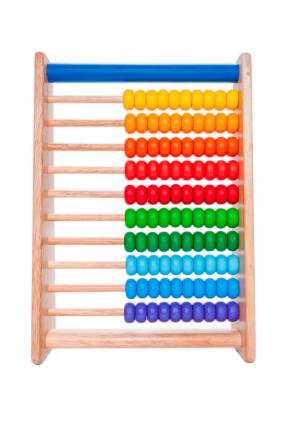In learning math, there’s more than one way to the correct answer
Students in today’s classrooms learn basic computational skills and how to use math in solving real-world problems.


By Pamela Chergotis
Oh, the stress of learning math! It’s all so black and white — there are right answers, and there are wrong answers. Those more comfortable in the gray area in-between often find themselves afflicted with palpitations and sweaty palms. As the French writer Stendhal observed, “Mathematics allows for no hypocrisy and no vagueness.”
Getting math right is a high-stakes proposition in our increasingly STEM-obsessed world. And how to teach it has long bedeviled educators. The pendulum has swung back and forth many times between a conceptual approach that emphasizes critical thinking, to one more grounded in the memorization of formulas; from the academic needs of the college-bound student, to the needs demanded by everyday life. Local teachers incorporate some of each, all while keeping a firm eye on the human element.
Thomas Smith, math coordinator for the Delaware Valley School District in Pike County, Pa., tells teachers to “make a connection with each kid.”
“Respect who they are,” he said. “Show them you genuinely care.”
He said getting to know students helps connect math to something they’re already interested in, like basketball.
It’s also important to show students how math will help them in the real world, throughout life.
“I’m sure every teacher has had the ‘When am I ever going to use this?’ question posed to them as some point in the classroom,’ said Eric Hassler, Assistant Superintendent of Curriculum and Instruction at the Monroe-Woodbury Central School District in Central Valley, N.Y. “Some connections to real world applications are easier to make than others. However, it is hard to debate the benefit of a solid foundation in mathematics. The importance of numeracy and mathematical concepts transcends into countless areas. As Ben Franklin put it, ‘No employment can be managed without arithmetic, no mechanical invention without geometry.’”
Smith urges students to look beyond the classroom.
“I ask them, Will you ever be on your own? How will you manage your living expenses? Will you ever buy a car or a house? Will you ever have a job?
“I ask them to flip over a credit card to where it says you pay 19 percent interest. Did you know that you pay $19 for every $100 item you purchase with that card?”
He tells students about the confusion his mother encountered when financing a new car. Her bank offered a 9 percent annual rate on a loan. The car dealer, meanwhile, was offering 1 percent — a month.
“That 1 percent sounds much better than the 9 percent, unless you understand that it’s really 12 percent a year — 3 points higher than the bank’s offer,” he said.
Conceptual thinking
The black/white, right/wrong answer approach has receded over time with a greater emphasis on how you get there.
Smith has taught math for 30 years, and like other teachers in earlier days, he started out as “the sage on the stage”: the teacher would put a problem on the board, and the students would work on the problem. More group learning is happening now, he said, with more explanation and more thought going into the process.
“There is more than one path to the correct answer,” he said. “I’ll ask, ‘Why did you do it that way?’ If they get the wrong answer, I’ll ask, ‘Show me how you did it.’ Then I’ll point out where things went wrong. I’ll ask deeper questions.”
Hassler said students in earlier grades are tackling greater complexity and doing more abstract thinking now than in the past.
“When I first started teaching at Monroe-Woodbury we used the Everyday Math program, created by the University of Chicago,” he said. “The program emphasizes conceptual understanding and problem-solving, and it accomplished this through experiential learning and the use of manipulatives. While math instruction today still emphasizes conceptual understanding and problem-solving, the skills students are learning at even younger ages is impressive. Additionally, when I first started teaching, students could accelerate their math instruction by taking the Regents exams early and then taking Advanced Placement courses. This opportunity still exists. However, we now offer an array of different college level mathematics courses within our high school. In addition to taking the Advanced Placement exams and possibly earning college credit, we also currently offer college level math courses totaling 23 college credits.”
Instant potatoes
Smith said students bring their own attitudes toward learning to class. The “just show me” students are more interested in procedure and getting straight to the correct answer. Other students want to explore. Smith encourages the latter approach.
“You want them to delve deeper” and away from what he calls the “microwave mass” phenomenon.
“Everyone wants instant potatoes or instant pudding,” he said. “Like 5 times 3 equals 15 — they want everything to go that fast.”
Abstract thinking, which is needed to do algebra, is introduced early, in first and second grades.
“You’re always building on what came before,” said Smith.
Spoon-feeding information doesn’t help students learn, he said, so he introduces more “cognitive dissonance” to make kids struggle.
“I put conceptual understanding before procedural understanding, and build toward that,” he said.
After calculators
Even with computational help at everyone’s fingertips, Smith wants students to be able to do their own figuring.
“Back in the day, we learned to be calculators because there were no calculators,” he said. Today’s students should still understand how math works so that if they are working on a complex word problem with numbers, he said,”so that they’re not stalled by a simple calculation like 7 times 6.”
Hassler sees technology as “a key tool” in math instruction, but extending beyond the calculator.
“Teachers are frequently using online resources, such as videos and tutorials, to support instruction within the classroom,” said Hassler. “Not only is this engaging for students in the classroom, the students can access many of these resources at home for additional support and reinforcement. Students are also becoming more and more proficient at doing math on devices as well. Kids still use pencil and paper as we did, but they are also adept at using online tools to measure, calculate, and organize their thinking. It’s not just the calculator anymore. Our middle school students are calculating measurements to code the flight path of drones in class!”
Smith said every student learns at a different pace.
“Kids will see the light at various times throughout the school year,” he said.
With some, it will be 160 days into a 180-day school year before they finally get it.
“It’s nice to see the bulbs go off,” he said.
There is more than one path to the correct answer. I’ll ask, ‘Why did you do it that way?’ If they get the wrong answer, I’ll ask, ‘Show me how you did it.’ Then I’ll point out where things went wrong. I’ll ask deeper questions.”
Proggresive Education
Before progressive education was introduced at the turn of the 20th century, mathematics was seen as a form of mental discipline that toughened brains for college. With progressive education, math for everyday living, like paying taxes and household budgeting, grew in emphasis.
The Life Adjustment Movement
Teaching math for utilitarian purposes gained strength during World War II, when the military brass complained about recruits coming from public schools without the skills needed for bookkeeping and gunnery. The Life Adjustment Movement was born, moving math education further away from academics toward “home, shop, store, citizenship, and health.”
The New Math
The New Math of the 1960s returned to a more academic approach to strengthen science and math skills after the Soviet Union launched Sputnik I into space. But it didn’t last. Professor George F. Simmons said the New Math produced students who had “heard of the commutative law, but did not know the multiplication table.” The New Math is now regarded as a fad, and at the time was fodder for jokes. Songwriter Tom Lehrer wrote:
You can’t take three from two
Two is less than three
So you look at the four in the tens place
Now that’s really four tens
So you make it three tens
Regroup, and you change a ten to ten ones
And you add ‘em to the two and get twelve
And you take away three, that’s nine
Is that clear?
The Open Education Movement
The National Science Foundation called for a back-to-basics approach to teaching math, and progressive education returned -- with a revolutionary twist. The Open Education Movement of the 1970s saw a proliferation of “free schools” in which children let loose at activity tables and play corners decided for themselves each day what they should learn.
“A Nation at Risk”
In 1983 the National Commission of Excellence in Education published the report “A Nation at Risk,” which found that the Open Education Movement produced students who lacked basic skills and needed a great deal of remedial math when they got to high school, college, and the workplace. The report did not, however, offer any remedies.
The Math Wars
Math education reached its most contentious peak in the 1990s. The debate was over whether to teach computational skills based on formulas and step-by-step procedures that could be memorized and practiced, or to take a more conceptual approach, in which students used math to grapple with real-world problems.
Common Core Math
The Common Core, introduced in 2010, set nationwide standards for K-12 education in response to panic over American schools falling far behind other countries in measures like the Program for International Student Assessment (PISA). Some experts blamed the federal No Child Left Behind law of 2002, which tied funding to each school’s ability to reach certain benchmarks. At the same time employers were asking for workers who had critical thinking skills. So Common Core math moved away from an emphasis on formulas and toward the use of math in real-life situations, with students asked to explain their reasoning. Like the New Math, the Common Core came in forits share of mockery. “Common Core testing prepares our students for what they’ll face as adults: pointless stress and confusion,” Comedian Stephen Colbert said in 2014. Pointing to an actual Common Core math problem, he said, in a satirical tone: “That word problem couldn’t be easier to solve. All you have to do is check the semicircles on the two-sided arrow, put the numbers up in it, and bing bang math!”